 |
 |
 |
| |
ASSESSMENT OF OBESITY AND METABOLIC PROFILE BY INTEGRASE INHIBITOR USE IN REPRIEVE
|
| |
| |
CROI 2021 March 6-10 Reported by Jules Levin
Emma Kileel1, Janet Lo1, Carlos Malvestutto2, Markella V. Zanni1, Kathleen Fitch1, Carl Fichtenbaum3, E. Turner Overton4, Nwora Lance Okeke5, Princy N. Kumar6, Esau Joao7, Pamela S. Douglas5, Judith A. Aberg8, Heather J. Ribaudo9, Steven Grinspoon1
1Massachusetts General Hospital, Boston, MA, USA, 2The Ohio State University, Columbus, OH, USA, 3University of Cincinnati, Cincinnati, OH, USA, 4University
of Alabama at Birmingham, Birmingham, AL, USA, 5Duke University School of Medicine, Durham, NC, USA, 6Georgetown University, Washington, DC, USA, 7HFSE- Hospital Federal dos Servidores do Estado, Rio de Janeiro, Brazil, 8Icahn School of Medicine at Mt Sinai, New York, NY, USA, 9Harvard TH Chan School of Public Health, Boston, MA, USA
Background: Among people with HIV (PWH), use of integrase inhibitor (InSTI)- based antiretroviral treatment (ART) has been associated with weight gain, but the health consequences of this weight gain remain unknown. Leveraging baseline data from a large, international cohort of ART-treated PWH eligible for primary cardiovascular disease (CVD) prevention, we investigated the association of InSTI vs. non-InSTI-based ART with body mass index (BMI), waist circumference (WC), fasting glucose and low-density lipoprotein (LDL).
Methods: The Randomized Trial to Prevent Vascular Events in HIV (REPRIEVE) enrolled a global cohort of ART-treated PWH, aged 40-75 years with low-to- moderate traditional CVD risk. This cross-sectional analysis examined the effect of InSTI-use (>6 months) among participants in regions where at least 5% of the enrolled population were using InSTI-based regimens (High Income and Latin America/Caribbean Global Burden of Disease super regions). Primary analyses used linear and logistic regression; secondary analyses used quantile regression to examine differences in the distribution tails. Characteristics of those with and without entry InSTI-use were balanced by inverse probability of treatment weights (IPTW).
Results: Among 4498 enrolling in higher InSTI-use regions, 1847 were on an InSTI; 62% of the remainder were on an NNRTI, 36% a PI. Median age was 51 years (Q1-Q3: 46-55), 23% were natal female, 40% were Black/African American. Among participants on an InSTI, mean BMI was 28.2 kg/m2 (±6.1kg/ m2) and mean WC was 97.7cm (±14.8cm). IPTW regression showed higher mean BMI of +1.6kg/m2 (95% CI: 1.2-1.9) and 65% higher odds of obesity (1.4-1.9) with InSTI-use compared to no InSTI-use. InSTI-use was also associated with higher WC (Table). This difference was greatest among natal females (+5.0cm (2.8-7.3) higher with InSTI-use compared to without). IPTW quantile regression suggested the greatest differences with InSTI-use were in the upper tails of BMI and WC distributions (Table). Parallel differences in fasting glucose and LDL were not apparent except at the 95th quantile of glucose among natal females (Table).
Conclusion: In an IPTW cross-sectional analysis, InSTI-use was associated with higher BMI, higher odds of obesity, and higher WC, especially among natal females, but largely not associated with elevated fasting glucose or LDL. Future longitudinal analyses of REPRIEVE participants on InSTI vs non-InSTI ART will help characterize long-term cardiometabolic effects of InSTI-use among PWH
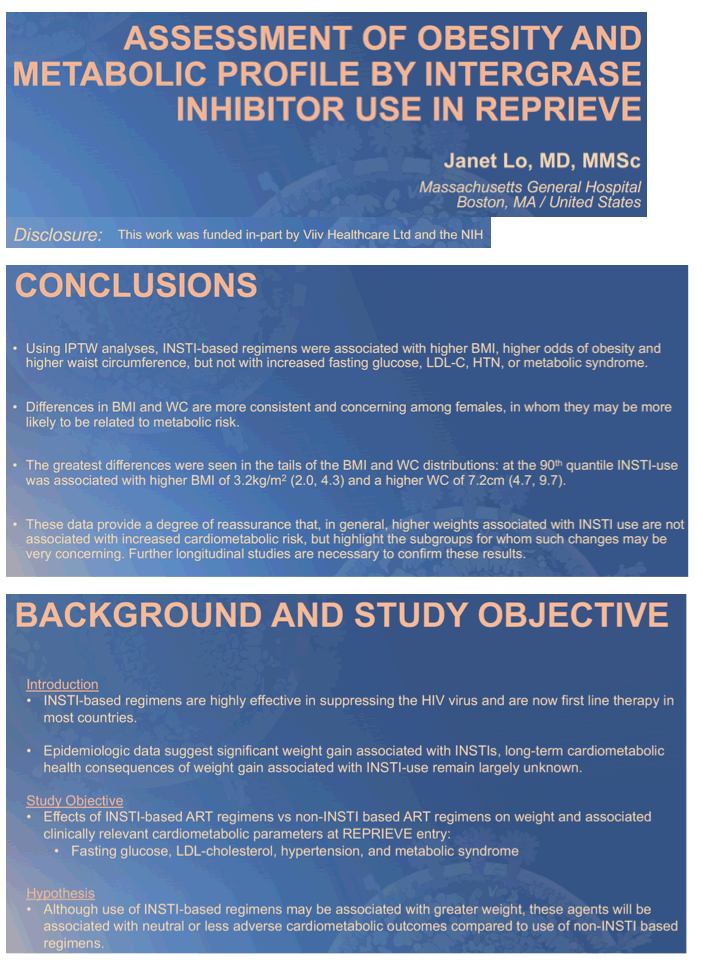
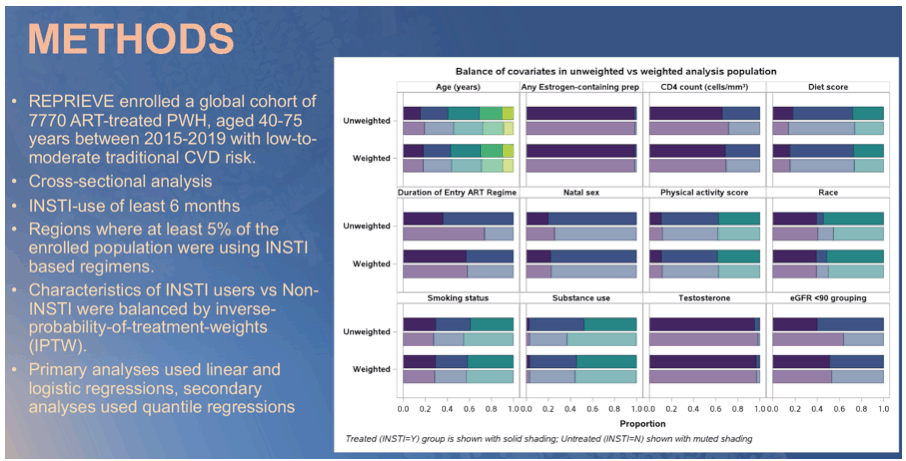
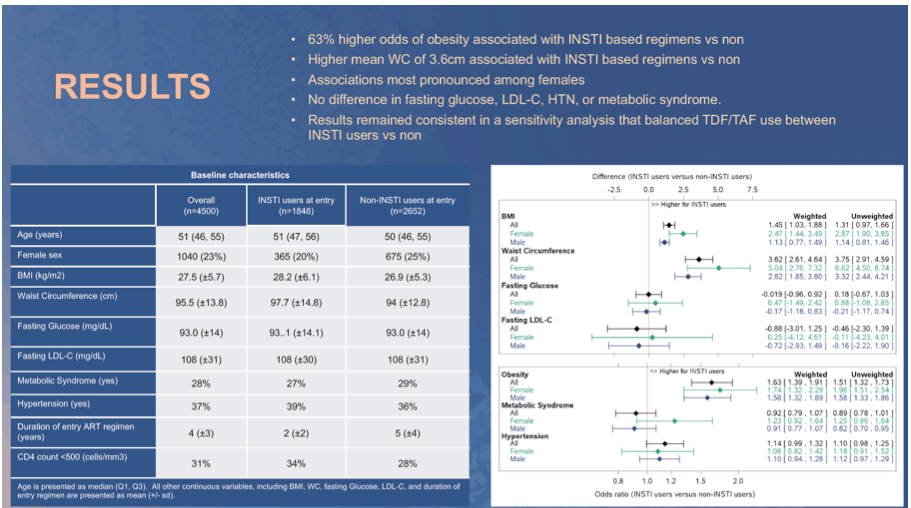
Of note, this graph shows us that at the 90th quantile, the differences in BMI between INSTI users and non-users was 3.1kg/m2 versus only 0.7kg/m2 at the 50th quantile. This is also where we see the difference in waist circumference (WC) of 7.2cm at the 90th centile versus 2.9cm at the 50th centile.
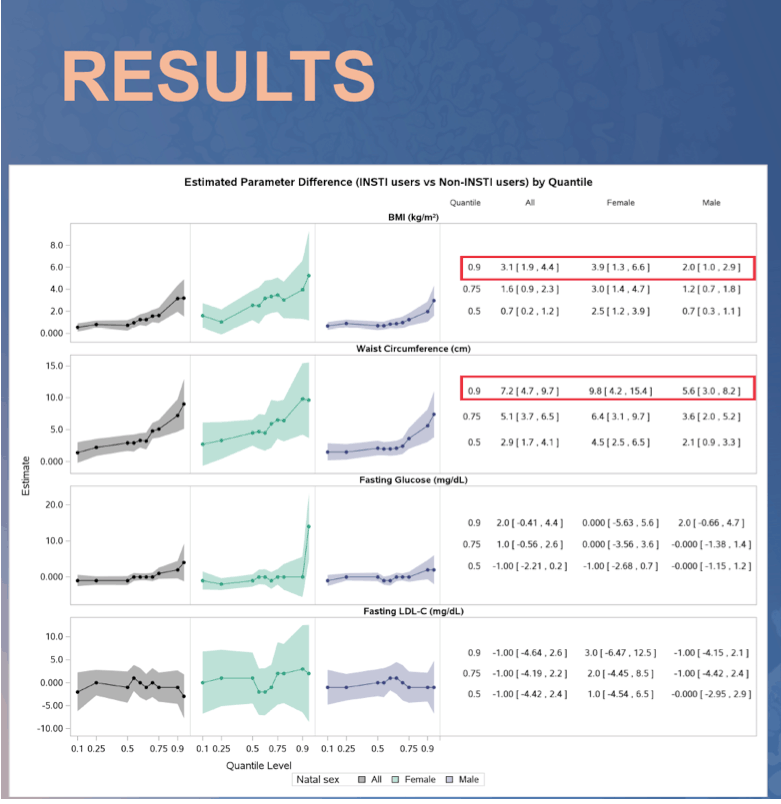
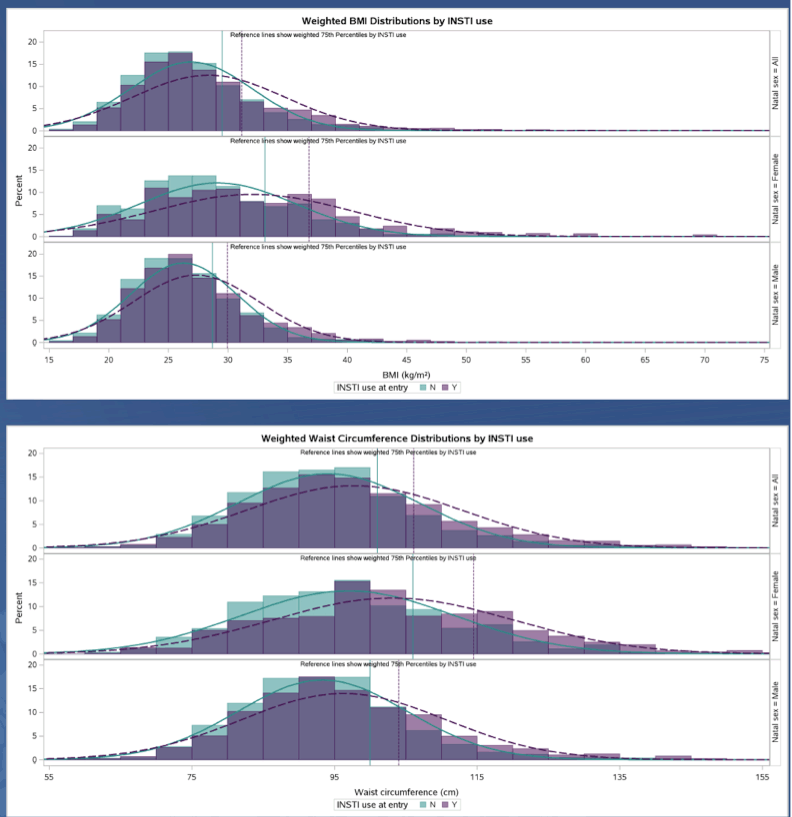
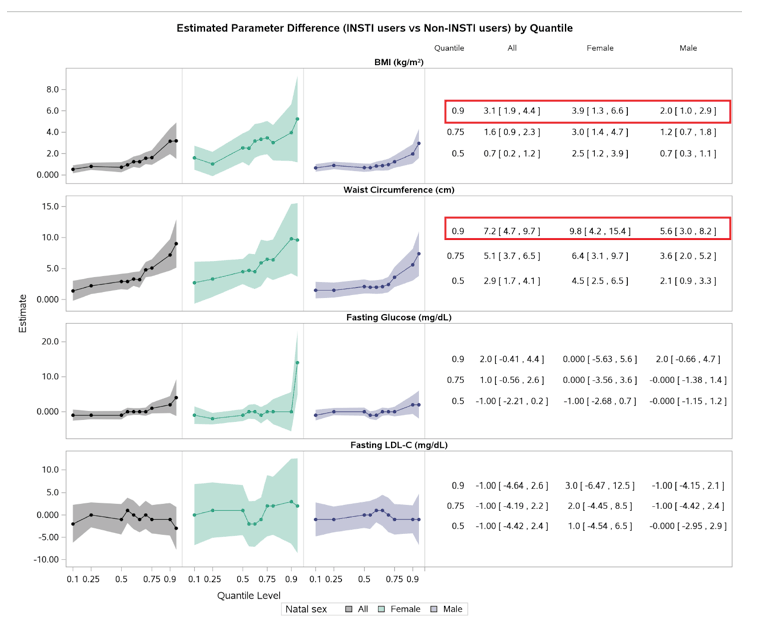
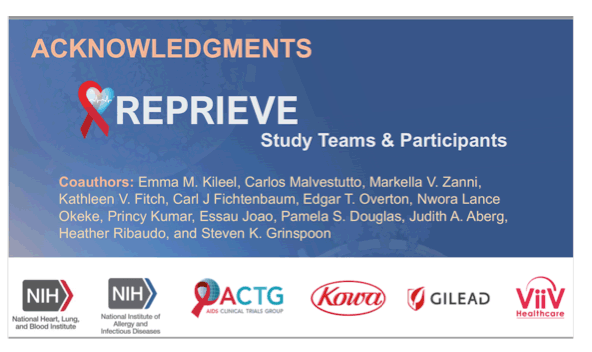
|
| |
|
 |
 |
|
|